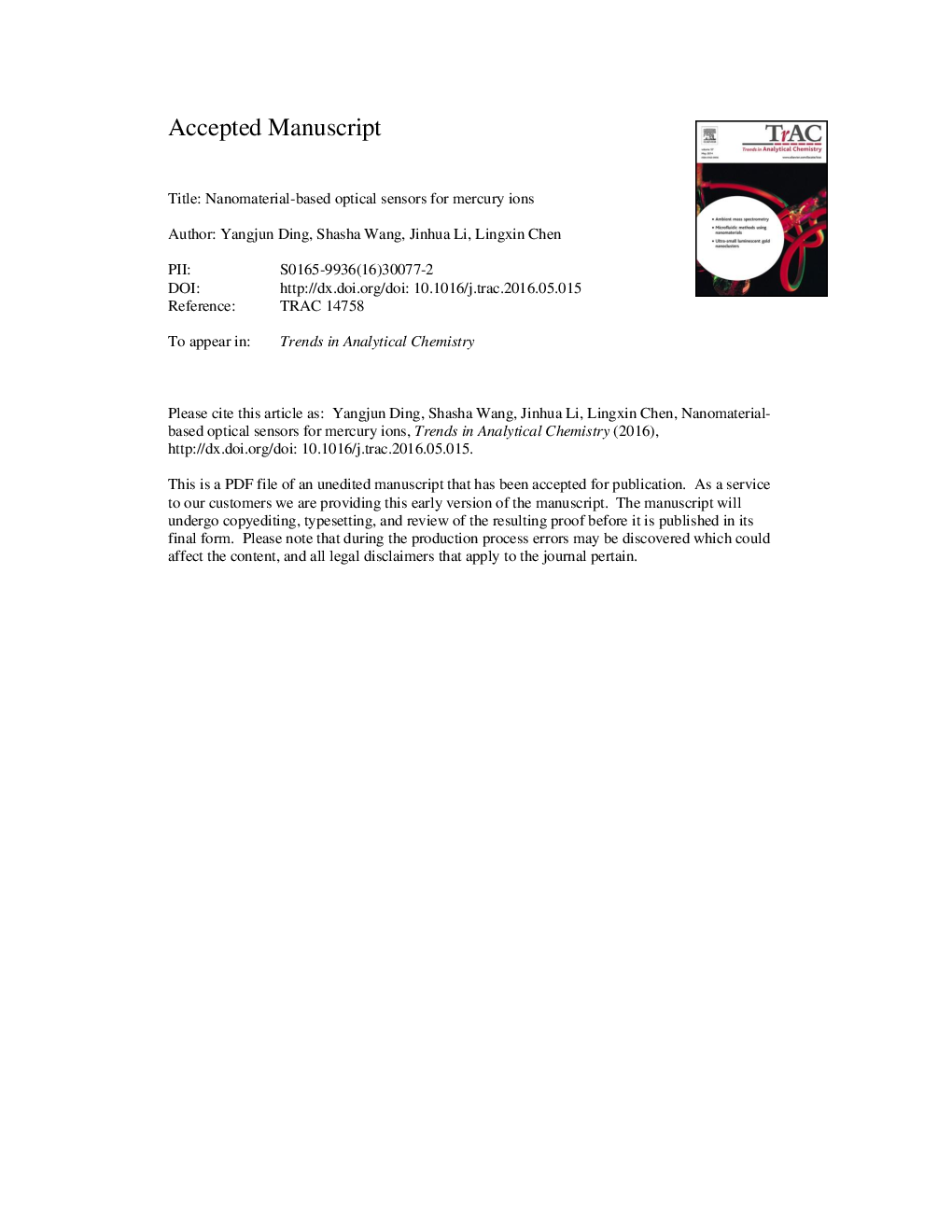| Article ID | Journal | Published Year | Pages | File Type |
|---|---|---|---|---|
| 7688264 | TrAC Trends in Analytical Chemistry | 2016 | 70 Pages |
Abstract
As one of the most toxic heavy metals, mercury ion (Hg2+) has become a concern focus for its severe threats to environment and human health. As a result, it is of great importance to develop novel methods to realize the recognition and quantification of Hg2+. The past decades witness the development of nanomaterial-based optical sensors for Hg2+ detection, showing the benefits of simplicity, rapidity, high sensitivity and selectivity, and cost-effectiveness. The reported methods have allowed the detectability down to nanomolar concentrations or much lower levels, and proved their practical applications for detecting and quantifying Hg2+ in synthetic solutions or natural water samples. In this review, we summarize the published innovations in nanomaterial-based optical sensors for the detection of Hg2+ according to different sensing strategies, including colorimetric, fluorescent and surface enhanced Raman scattering detection. Moreover, some challenges and significant attempts related to these methods are also discussed.
Keywords
Related Topics
Physical Sciences and Engineering
Chemistry
Analytical Chemistry
Authors
Yangjun Ding, Shasha Wang, Jinhua Li, Lingxin Chen,
